
Graphing exponential functions (parent functions) YouTube
Explore math with our beautiful, free online graphing calculator. Graph functions, plot points, visualize algebraic equations, add sliders, animate graphs, and more.
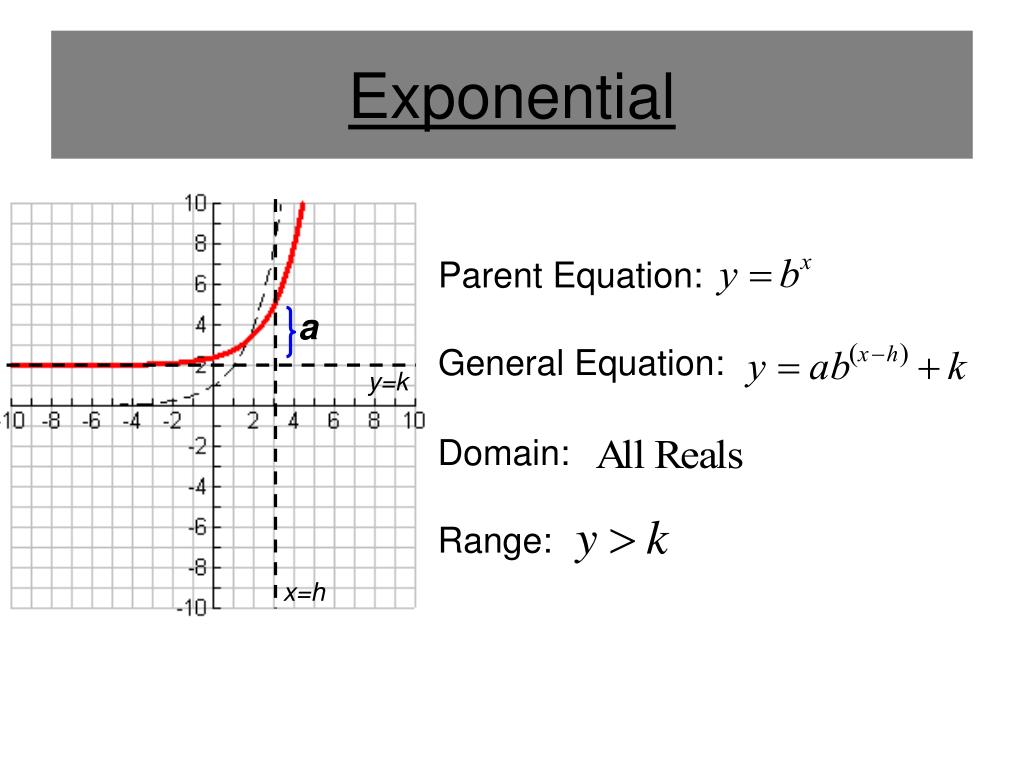
PPT Function Transformations PowerPoint Presentation, free download
What is a Parent Function? In mathematics, functions are defined as a relationship between input (independent variable such as x) and an output (dependent variable such as y). This relationship.

Big Blue Book of Parent Functions Exponential YouTube
Graphing exponential functions (parent functions) - YouTube © 2023 Google LLC We'll build a simple table of values and then graph y = 2^x and then y = (1/2)^2, which are the basic exponential.
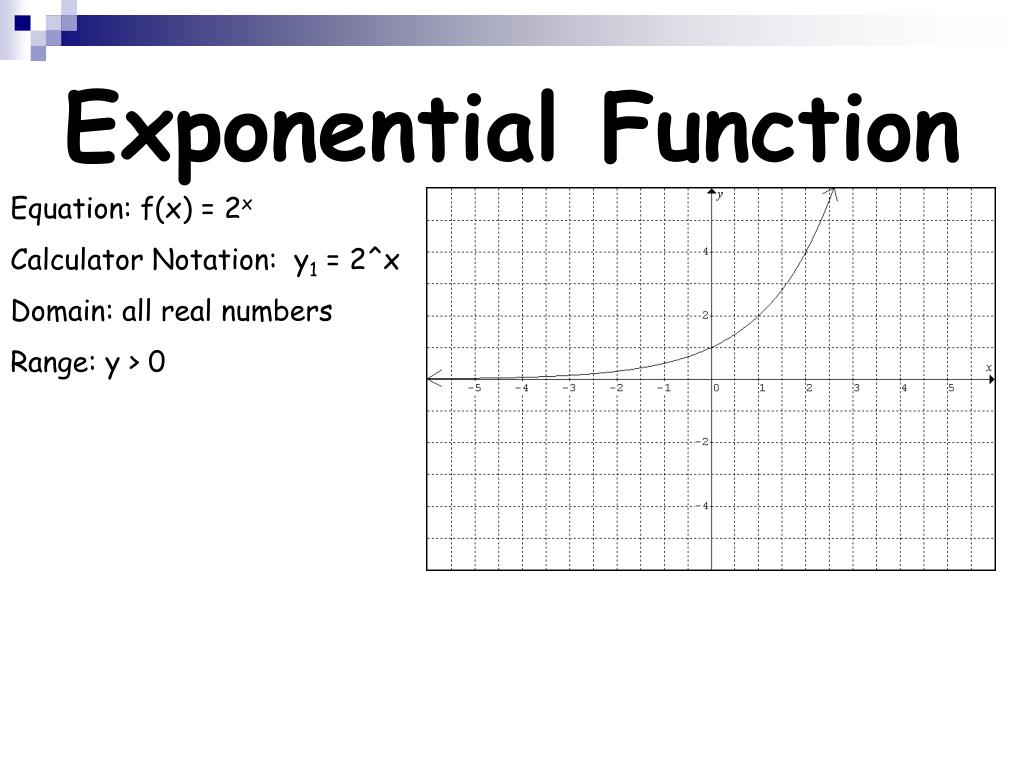
PPT Parent Functions PowerPoint Presentation, free download ID3924112
Explore math with our beautiful, free online graphing calculator. Graph functions, plot points, visualize algebraic equations, add sliders, animate graphs, and more.

Exponential Functions Cuemath
The domain of f(x) = 2x is all real numbers, the range is (0, ∞), and the horizontal asymptote is y = 0. To get a sense of the behavior of exponential decay, we can create a table of values for a function of the form f(x) = bx whose base is between zero and one. We'll use the function g(x) = (1 2)x.

PPT Parent Functions PowerPoint Presentation, free download ID2576658
Custom Solutions Log In Exponential functions follow all the rules of functions. However, because they also make up their own unique family, they have their own subset of rules. The fo

PPT Parent Functions & Transformations PowerPoint Presentation ID
The asymptotes for exponential functions are always horizontal lines. Point 2: The y-intercepts are different for the curves. Finding the location of a y-intercept for an exponential function requires a little work (shown below). To determine the y-intercept of an exponential function, simply substitute zero for the x-value in the function.
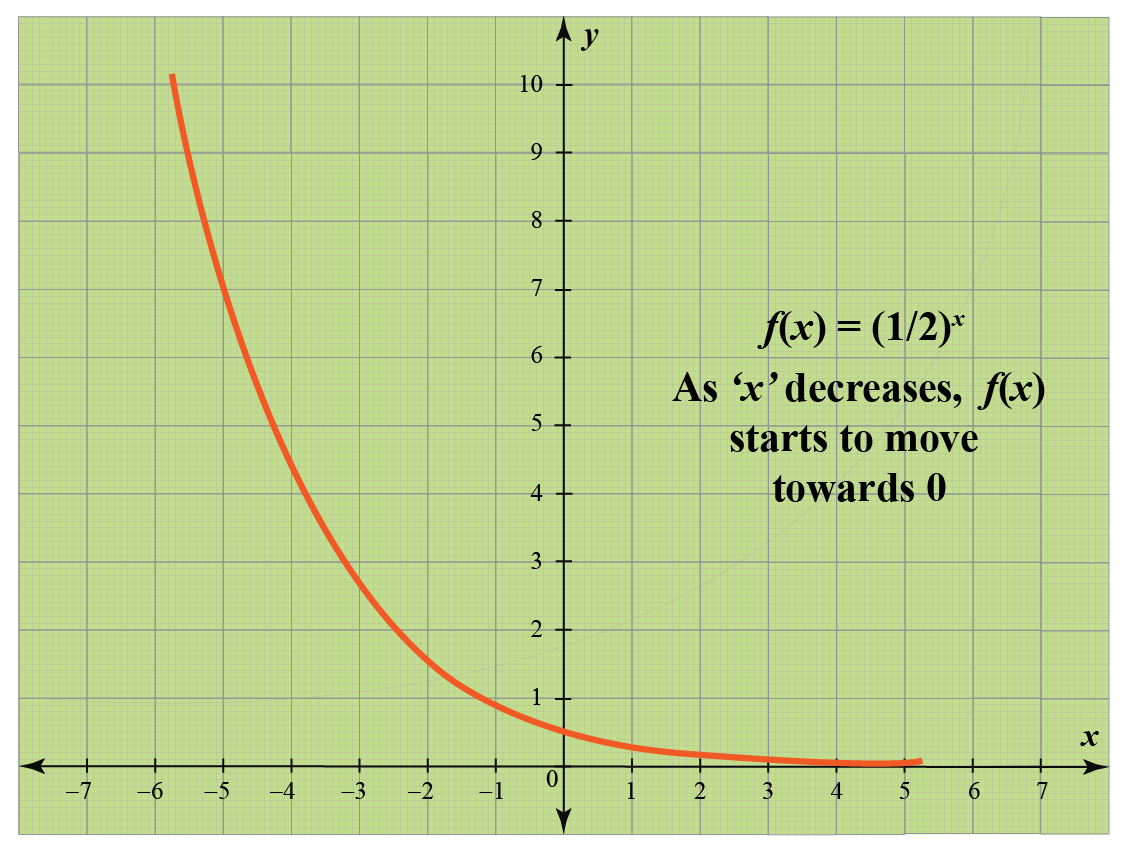
Exponential Functions Cuemath
Exponential functions are one-to-one functions. • graph crosses the y -axis at (0,1) • when b > 1, the graph increases • when 0 < b < 1, the graph decreases • the domain is all real numbers • the range is all positive real numbers (never zero) • graph passes the vertical line test for functions

Growth And Decay Exponential Growth Exponential Function Parent
A parent function represents a family of functions' simplest form. This definition perfectly summarizes what parent functions are. We use parent functions to guide us in graphing functions that are found in the same family. In this article, we will: Review all the unique parent functions (you might have already encountered some before).

PPT PARENT FUNCTIONS PowerPoint Presentation, free download ID2019169
An exponential function represents the relationship between an input and output, where we use repeated multiplication on an initial value to get the output for any given input. Exponential functions can grow or decay very quickly.
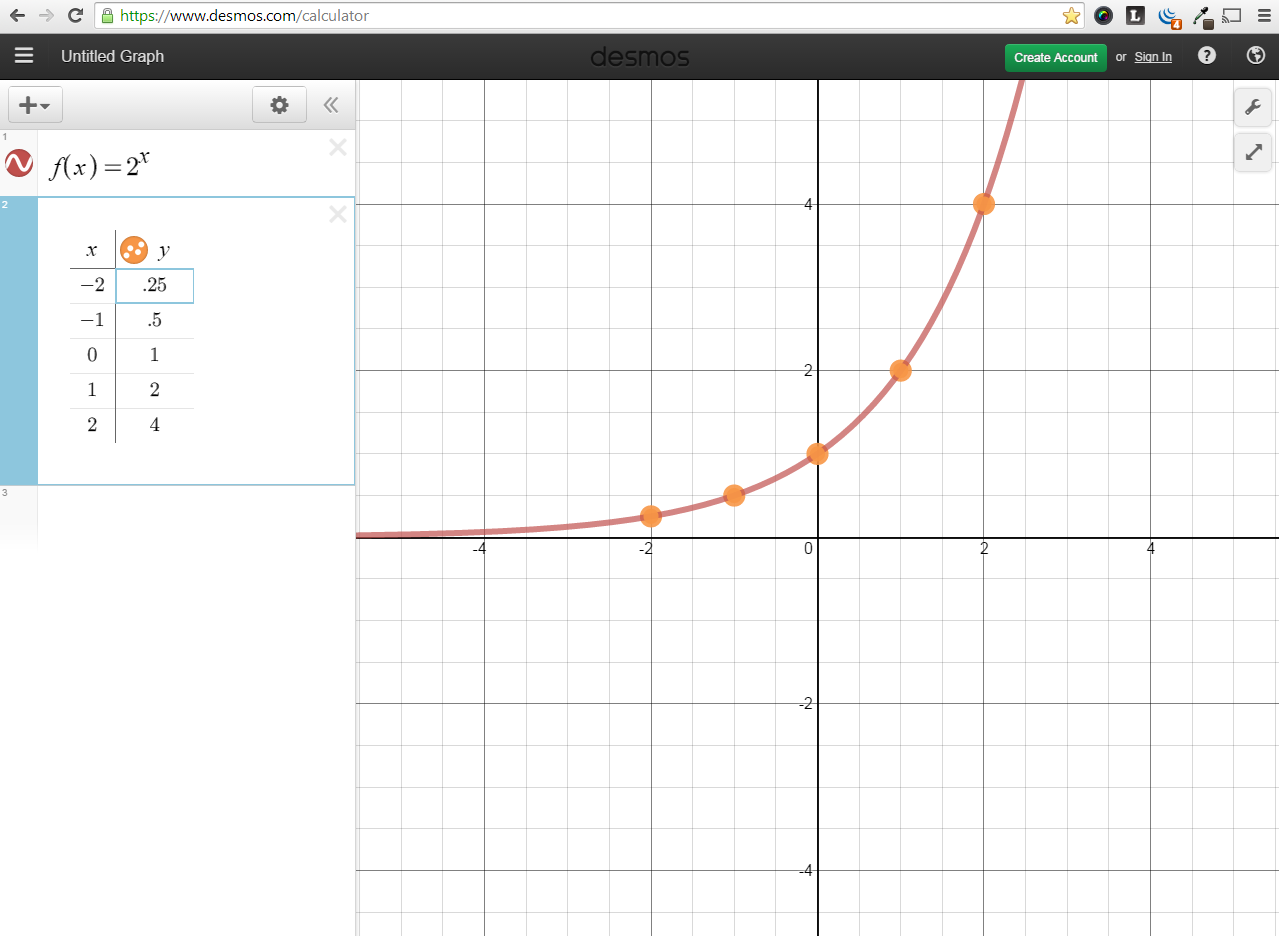
Exponential Functions Systry
For exponential functions, get the new asymptote by setting $ y=$ the vertical shift. The domain is always $ \left ( {-\infty ,\infty } \right)$, and the range changes with the vertical shift. Here are some examples, using t -charts, as we saw in the Parent Graphs and Transformations section: Transformation. T-chart.
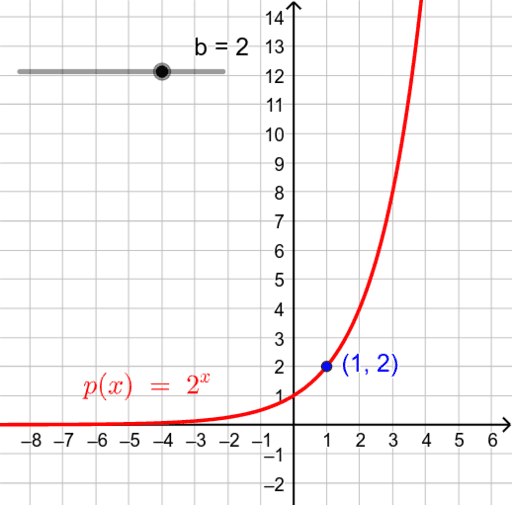
Explore the base of an exponential parent graph GeoGebra
8. Table 1. Each output value is the product of the previous output and the base, 2. We call the base 2 the constant ratio. In fact, for any exponential function with the form f (x) = ab is the constant ratio of the function. This means that as the input increases by 1, the output value will be the product of the base and the previous output.

Exponential Parent Functions
Unit 1 Polynomial arithmetic Unit 2 Complex numbers Unit 3 Polynomial factorization Unit 4 Polynomial division Unit 5 Polynomial graphs Unit 6 Rational exponents and radicals Unit 7 Exponential models Unit 8 Logarithms Unit 9 Transformations of functions Unit 10 Equations Unit 11 Trigonometry Unit 12 Modeling Course challenge
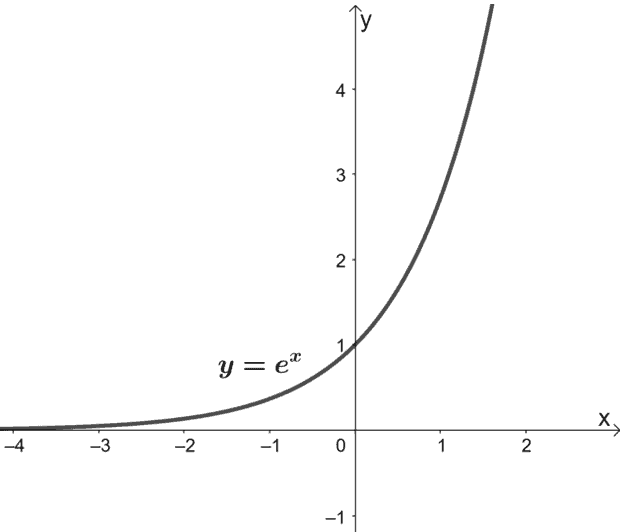
Parent Functions Types, Properties & Examples
Before we begin graphing, it is helpful to review the behavior of exponential growth. Recall the table of values for a function of the form f(x) = bx whose base is greater than one. We'll use the function f(x) = 2x . Observe how the output values in Table 4.3.1 change as the input increases by 1. Table 4.3.1.

PPT PARENT FUNCTIONS PowerPoint Presentation, free download ID2019169
The range of an exponential function can be determined by the horizontal asymptote of the graph, say, y = d, and by seeing whether the graph is above y = d or below y = d. Thus, for an exponential function f (x) = ab x, Domain is the set of all real numbers (or) (-∞, ∞). Range is f (x) > d if a > 0 and f (x) < d if a < 0.
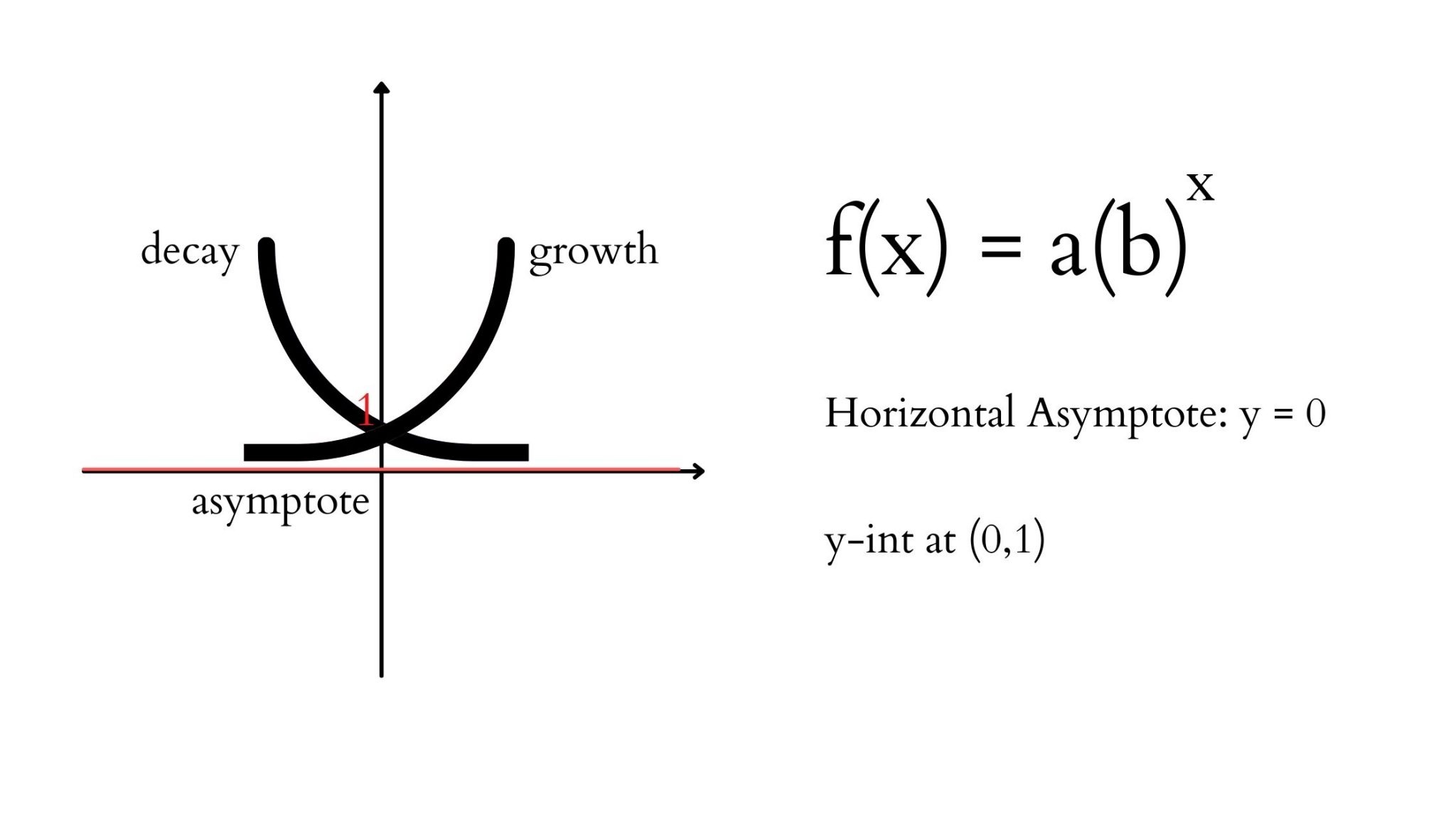
Exponential Functions. Transformations and Applications IntoMath
Linear Parent Function Equation: y = x Domain: All real numbers Range: All real numbers Slope of the line: m = 1 Y-intercept: (0,0) 03 of 09 Quadratic Parent Function Equation: y = x 2 Domain: All real numbers